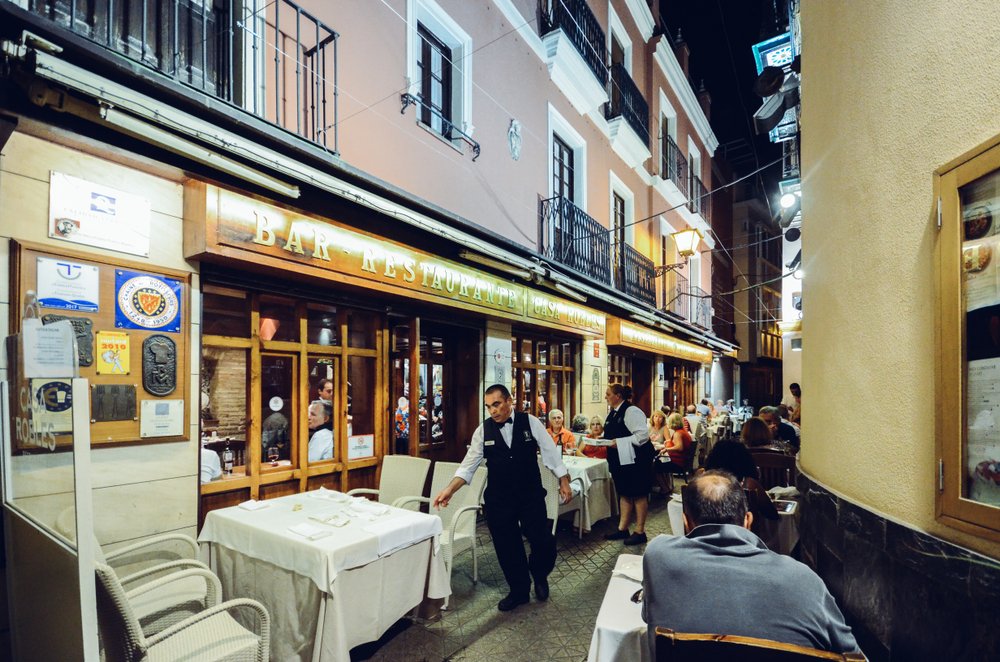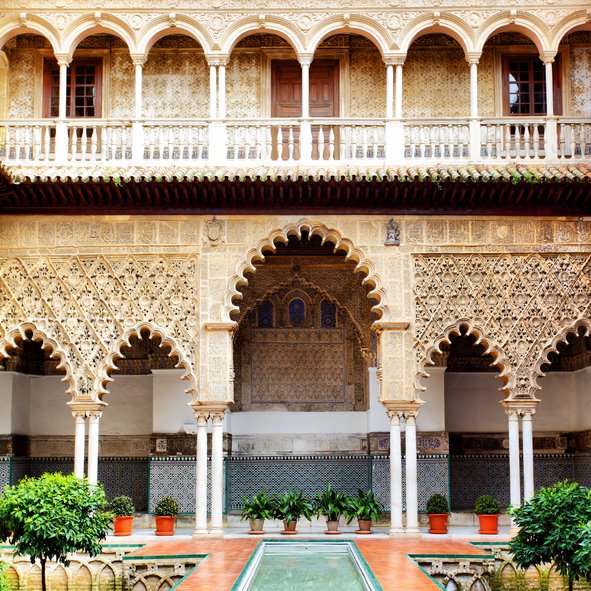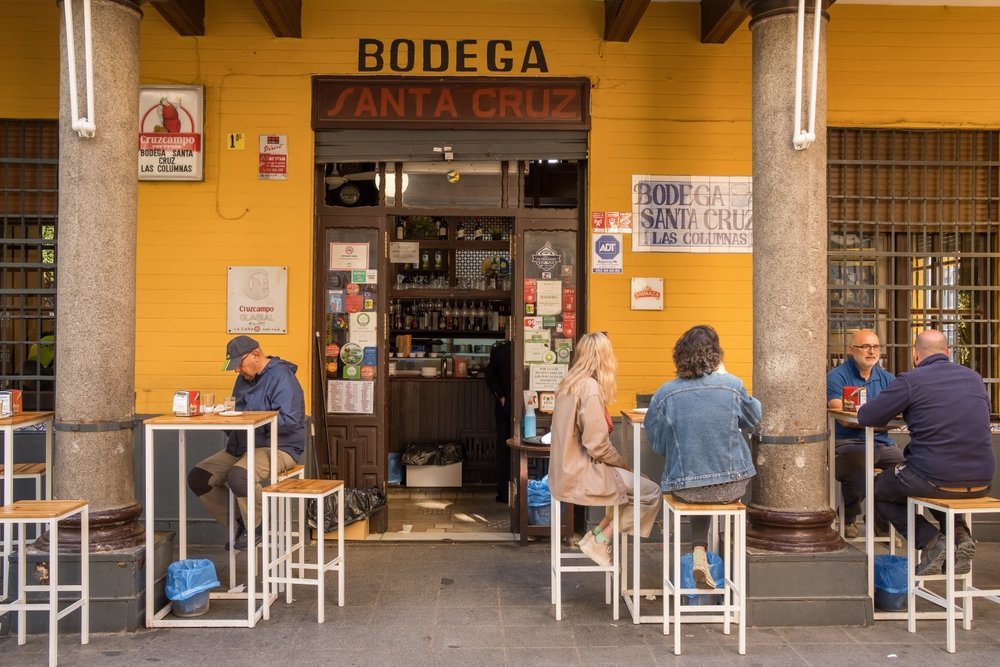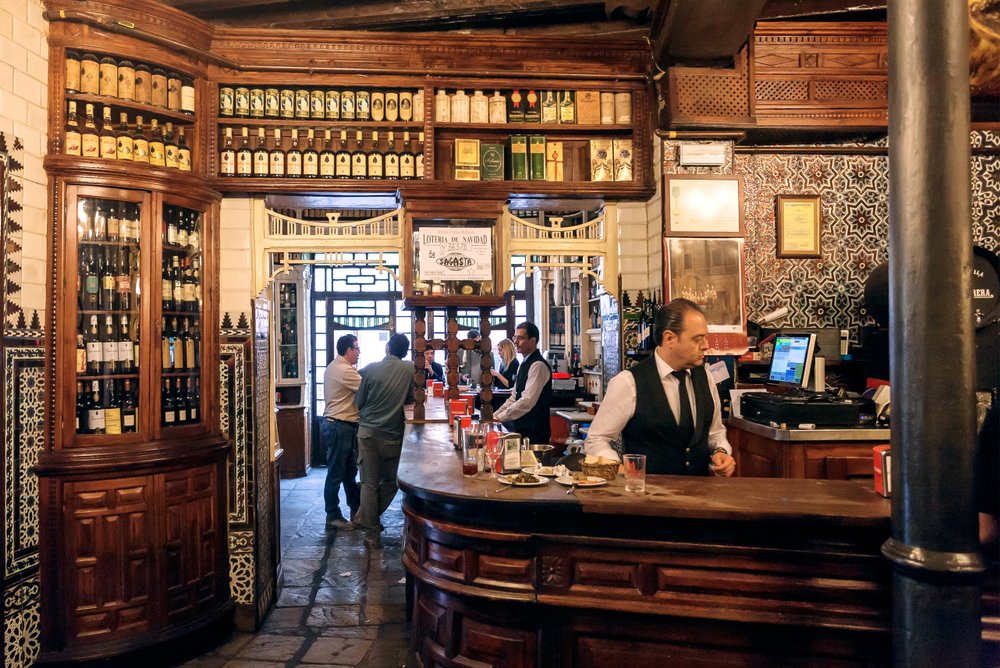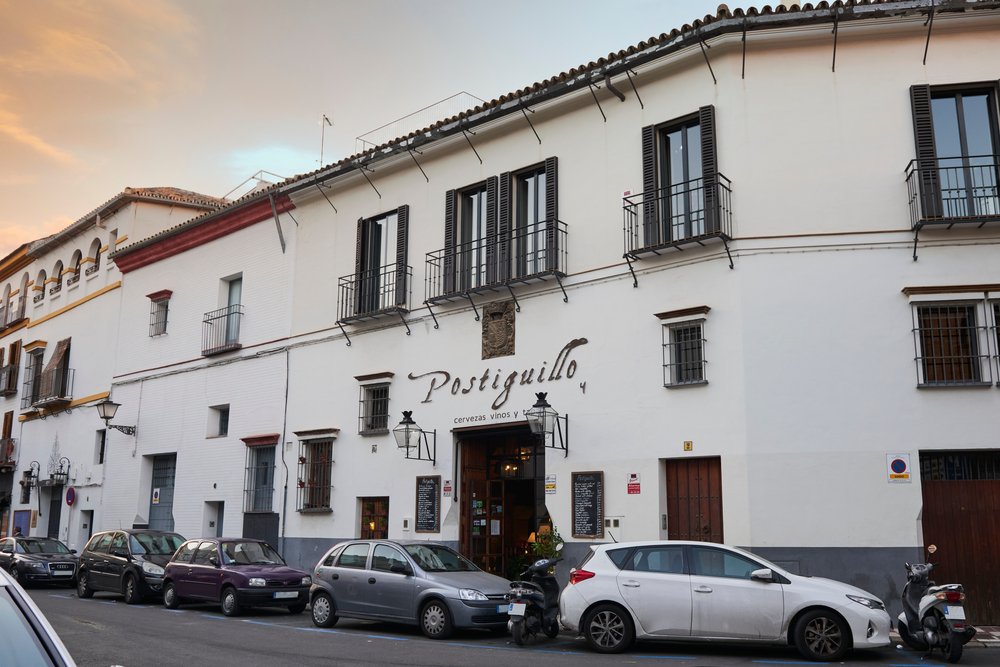With a history spanning over a thousand years, this fortified palace has witnessed the cultural and architectural evolution of the region and has been the residence of various monarchs throughout the centuries.
History
The Real Alcázar of Seville has its roots in the Roman era, although the building we see today mainly dates from the Islamic and Mudéjar periods, with later Christian additions. During the Muslim domination, the Alcázar was the palace of the Muslim rulers of Seville and served as a royal residence and defensive fortress. After the Christian conquest of the city in the 13th century, the Alcázar became the residence of Christian kings and underwent various expansions and renovations.
Architecture
The Real Alcázar is a magnificent example of Islamic, Mudéjar, and Renaissance architecture. The complex consists of several palaces, courtyards, gardens, and fortifications that combine architectural elements from different styles and historical periods. The Mudéjar palaces, such as the Palace of Peter I, are particularly noteworthy, characterized by their intricately carved wooden ceilings, decorative tiles, and intricate architectural details.
Among the most outstanding elements of the Real Alcázar are the Patio of the Maidens, an exquisite courtyard surrounded by horseshoe arches and decorated with Mudéjar tiles and plasterwork; and the Gardens of the Alcázar, impressive Renaissance gardens featuring fountains, ponds, flowerbeds, and a wide variety of plants and trees.
Collections and Decoration
The Real Alcázar houses an important collection of artworks, including paintings, sculptures, tapestries, antique furniture, and decorative objects. These artworks are distributed throughout the various halls and rooms of the palace, further enhancing the ambiance and enriching the visitor experience.
The interior decoration of the Real Alcázar is exquisite, with ceilings and walls adorned with tiles, stucco, plasterwork, and murals that reflect the rich artistic tradition of the region. Antique furniture, oriental rugs, and tapestries add a touch of luxury and sophistication to the different salons and rooms of the palace.
Visits and Tourism
The Real Alcázar of Seville is one of the most visited monuments in Spain, attracting millions of tourists each year. Visitors can freely explore the various courtyards, gardens, and halls of the palace, as well as enjoy guided tours and cultural activities organized within the grounds.
